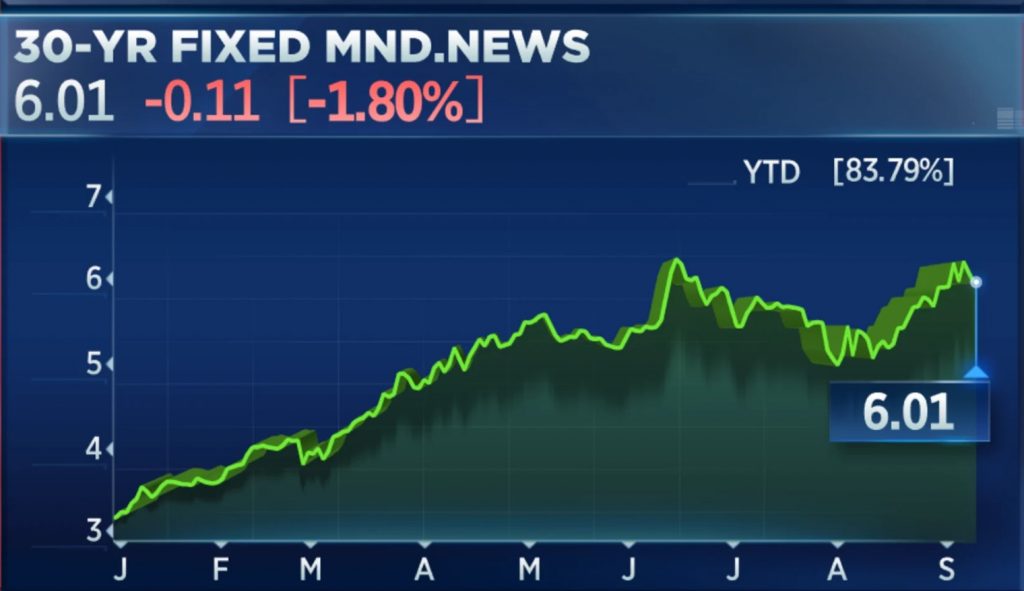Published by CNBC | September 9, 2022
The slowdown in the otherwise red-hot housing boom has been stunningly swift.
The U.S. housing market surged during the pandemic as homebound people sought new places to live, boosted by record-low interest rates.
Now, real estate agents who once reported lines of buyers outside open houses and bidding wars on the back deck say homes are sitting longer and sellers are being forced to lower their sights.
That has both potential buyers and sellers wondering where they stand.
“As recession concerns weigh on consumer outlooks, our survey shows uncertainty has made its way into the minds of many buyers.”
–Danielle Hale, chief economist at Realtor.com
Here are the major factors behind the topsy-turvy housing market.
Mortgage rates
The main driver of the slowdown is rising mortgage rates. The average rate on the 30-year fixed mortgage, which is by far the most popular product today, accounting for more than 90% of all mortgage applications, started this year right around 3%. It is now just above 6%, according to Mortgage News Daily.
That means a person buying a $400,000 home would have a monthly payment about $700 higher now than it would have been in January.
High prices, low supply
The other drivers of the slowdown are high prices and low supply.
Prices are now 43% higher than they were at the start of the coronavirus pandemic, according to the S&P Case-Shiller national home price index. The supply of homes for sale is growing, up 27% at the start of September compared with the same time a year ago, according to Realtor.com. While that comparison seems large, it’s still not enough to offset the years-long shortage of homes for sale.
Active inventory is still 43% lower than it was in 2019. New listings were also down 6% at the end of September, meaning potential sellers are now concerned as they see more houses sit on the market longer.
Paul Legere is a buyer’s agent with Joel Nelson Group in Washington, D.C. He focuses on the competitive Capitol Hill neighborhood, and he said he saw listings jump by 20 to 171 just after Labor Day. He now calls the market “bloated.” As a comparison, just 65 homes were listed for sale in March.
“This is a very traditional post Labor Day inventory bump and seeing in a week or so how the market absorbs the new inventory is going to be very telling,” he said. “Very.”
Inventory is taking a hit nationally because homebuilders are slowing production due to fewer potential buyers touring their models. Housing starts for single-family homes dropped 18.5% in July compared with July 2021, according to the U.S. Census.


